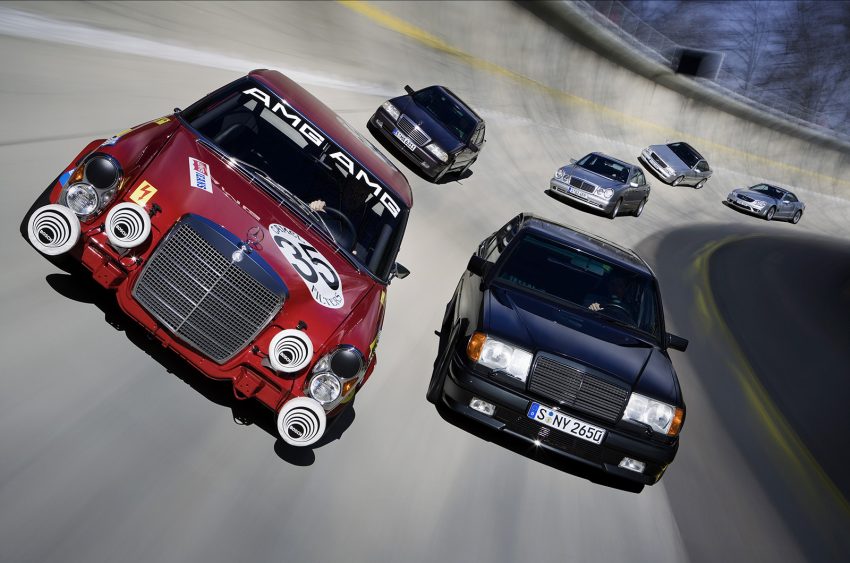Now and then uplifting news comes in inquisitive structures. For Hans-Werner Aufrecht, the choice by Mercedes-Benz to pull out from all types of hustling for 1965 more likely than not appeared to be a debacle.
As a youngster, he’d longed for building Mercedes race motors and presently, not long after observing work doing precisely that, the fantasy was going to be broken.
A lesser individual would have recently acknowledged the inescapable and returned to building street motors. In any case, not Aufrecht. With a similar associate called Erhard Melcher, he figured out how to gain a 300SE, strip it, raise the force of its motor from 170bhp to 238bhp and, with Manfred Schiek driving, win ten rounds of the 1965 German Touring Car Championship.
News voyaged quick and, before the finish of the next year, Aufrecht and Melcher were deluged with orders for quicker Mercedes, for use on street or track. So in 1967, they chose to surrender their positions at Mercedes and set up for business all alone in neighboring Burgstall. Furthermore while Aufrecht, Melcher and Aufrecht’s old neighborhood of Großaspach met up, AMG was conceived.
Business came thick and quick. Indeed, even Mercedes seemed to understand that it had missed a stunt and begun delivering all the more exceptionally tuned variants of its street vehicles, the 1968 6.3-liter 300SEL to name the clearest model. Be that as it may, what AMG could have deciphered as an endeavor to confuse its feet was rather viewed as an extraordinary open door: notwithstanding how quick and strong a Mercedes super-cantina may be, AMG supported itself to make it much quicker and all the more impressive.
It required three years, however when of the 1971 Spa 24 Hours, a 6.3-liter 300SEL street vehicle with 247bhp had turned into a 6.8-liter race vehicle with 428bhp. In spite of the heaves of group and contenders the same at the presence of an enormous red house of God on the matrix, the SEL thundered around to second place and a class win, by and large triumph being denied simply by a somewhat wild pitstop plan expected to fulfill its hunger for fuel and tires.
Business blast, supported by an interest for specially crafted insides as well as motors, and by 1976 it had grown out of the Großaspach premises, provoking a transition to Affalterbach, where the organization stays right up ’til today.
By the mid-1980s, AMG was very much into its step and capable not exclusively to tune previous item however to do as such so much that the subsequent vehicles should have been considered models by their own doing. The AMG 500SEC of 1984 had four-valve chamber heads well before any absolutely Mercedes item, however it would be 1986 preceding AMG crushed its direction into the worldwide auto mind with a vehicle that, suitably enough, would become known as ‘The Hammer’.
This was an average sized W124 cantina into which AMG had pressed Mercedes’ biggest motor (5.6 liters), yet solely after accommodating its own four-valve heads. Once Autocar street test proofreader David Vivian portrayed it along these lines: “Adequately quick to look down a Ferrari 288 GTO, it very well may be driven by your granny.” Back then, at that point, a back drive cantina with a four-speed auto ‘box that could in any case hit 60mph in 5.0sec level en route to 183mph was a remarkable, ridiculous accomplishment.
By 1990, the connection among Mercedes and AMG – which had existed on an undeniably more amicable premise than many tuning organizations and the producers of their contributor vehicles – became formalized. This drove not exclusively to furnishing Mercedes with AMG’s validity yet additionally to empowering AMG to sell its vehicles through Mercedes vendors with Mercedes-supported guarantees. Most fundamentally, in any case, Mercedes and AMG began to cooperate on item plan.
The absolute first product of these works was the W202-based C36 AMG of 1993. Today, when you can purchase an AMG A-class with 415bhp, the 276bhp of the C36 probably won’t seem like a lot, yet in those days it was to the point of placing it based on close to sufficient equivalent conditions with the E36-age BMW M3, regardless of whether, with gentler springs, a higher kerb weight and the maintenance of a four-speed programmed transmission, its personality was unmistakably unique. This was a critical vehicle, since it set the vibe for a whole age of AMG models to come.
